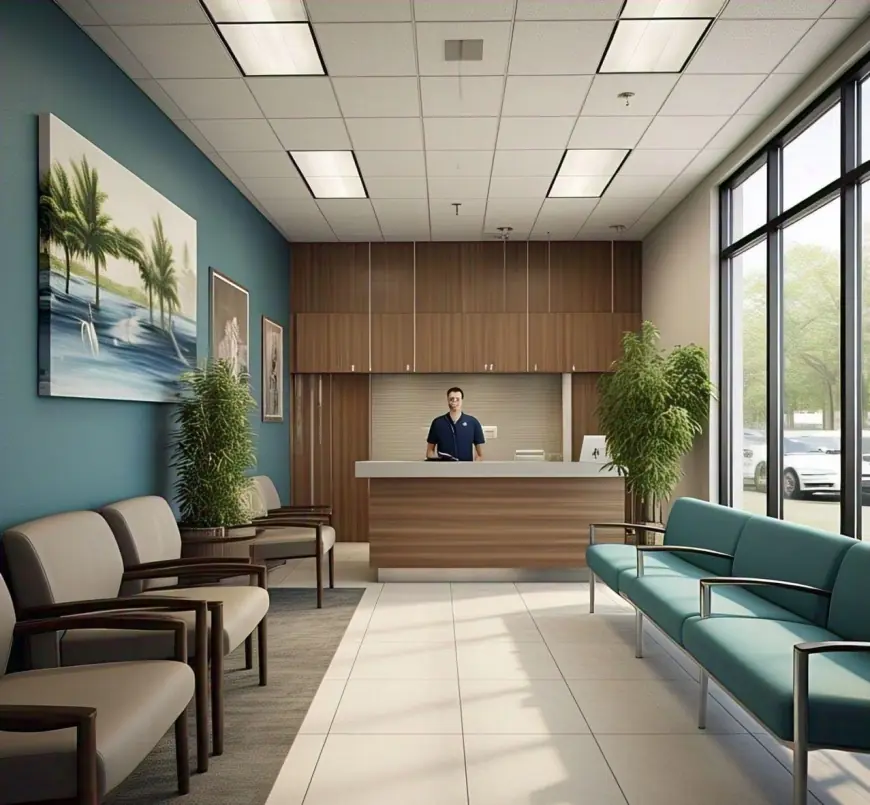Health Care Interior Design in Dubai: A Blend of Functionality and Aesthetics

Dubai, known for its architectural marvels and innovative designs, has also established itself as a leader in healthcare infrastructure. Health care interior design in Dubai is not just about aesthetics; it is about creating spaces that promote healing, enhance patient experience, and improve overall efficiency. With a strong focus on integrating modern technology, sustainability, and cultural sensitivity, interior designers in Dubai are redefining how hospitals, clinics, and wellness centers operate.
The Importance of Interior Design in Health Care Facilities
The environment in which patients receive care plays a significant role in their recovery and overall well-being. Thoughtful interior design can reduce stress, promote healing, and improve the productivity of medical staff. Factors such as lighting, layout, material selection, and acoustics all contribute to creating a space that enhances the patient experience while ensuring efficiency in medical procedures.
Key Elements of Health Care Interior Design in Dubai
1. Patient-Centric Design
Health Care Interior Design Dubai interior designers prioritize patient comfort and safety. This includes ergonomic furniture, non-slip flooring, and calming color schemes to reduce anxiety. Patient rooms are designed to be homely yet functional, with comfortable seating, natural lighting, and personalized elements to create a soothing atmosphere.
2. Use of Advanced Technology
Dubai is a global hub for technological advancements, and healthcare interior design reflects this trend. Hospitals and clinics integrate smart lighting, automated patient monitoring systems, and touchless technologies to enhance hygiene and efficiency. AI-driven designs also help optimize space utilization, improving workflow and patient care.
3. Sustainable and Eco-Friendly Designs
Sustainability is a major focus in Dubai’s healthcare industry. Designers incorporate eco-friendly materials, energy-efficient lighting, and water-saving fixtures to create green medical facilities. The use of biophilic design—incorporating natural elements such as indoor gardens, green walls, and natural ventilation—fosters a healing environment while reducing the facility’s carbon footprint.
4. Cultural Sensitivity in Design
Dubai’s diverse population necessitates culturally sensitive design. Hospitals and clinics often feature separate waiting areas for men and women, prayer rooms, and private consultation areas. Interiors reflect local aesthetics with traditional Arabic patterns and materials while maintaining a modern and international appeal.
5. Optimized Space Planning
Efficient space planning is critical in healthcare facilities. Designers in Dubai focus on minimizing congestion and ensuring seamless movement for patients, staff, and visitors. Modular layouts allow for easy expansion, while intuitive wayfinding systems with clear signage improve navigation within large hospitals.
6. Acoustics and Noise Control
Reducing noise levels in healthcare environments enhances patient recovery and staff efficiency. Sound-absorbing materials, noise-canceling designs, and strategic placement of waiting areas and treatment rooms help create a quieter and more comfortable environment.
7. Hygienic and Safe Materials
Infection control is a top priority in healthcare design. Dubai’s healthcare interiors incorporate antibacterial surfaces, seamless flooring to prevent bacteria buildup, and easy-to-clean furniture. The use of UV sanitation systems and advanced air filtration further ensures a sterile environment.
Emerging Trends in Health Care Interior Design in Dubai
1. Wellness-Oriented Design
There is a growing emphasis on incorporating wellness principles in healthcare interiors. Natural lighting, stress-relieving colors, and relaxation zones contribute to both physical and mental well-being.
2. Smart Hospitals
With Dubai’s vision for a smart city, healthcare interiors are increasingly integrating digital technologies. Automated lighting, temperature control, and AI-powered systems enhance efficiency and patient care.
3. Luxury Healthcare Interiors
Dubai’s high-end healthcare facilities are incorporating luxury elements to cater to VIP patients. Private suites, spa-like amenities, and designer furnishings offer a premium healthcare experience.
4. Flexible Spaces
The COVID-19 pandemic has influenced the design of adaptable spaces that can be repurposed for different medical needs. Convertible patient rooms, telemedicine-enabled consultation areas, and multi-functional waiting areas ensure resilience in healthcare design.
Conclusion
Health care interior design in Dubai is a dynamic blend of innovation, sustainability, and cultural sensitivity. By prioritizing patient comfort, integrating cutting-edge technology, and adhering to global health standards, Dubai continues to set a benchmark in medical facility design. Whether it's a state-of-the-art hospital or a boutique wellness clinic, the future of healthcare interiors in Dubai is centered on creating healing environments that are efficient, welcoming, and ahead of their time.












